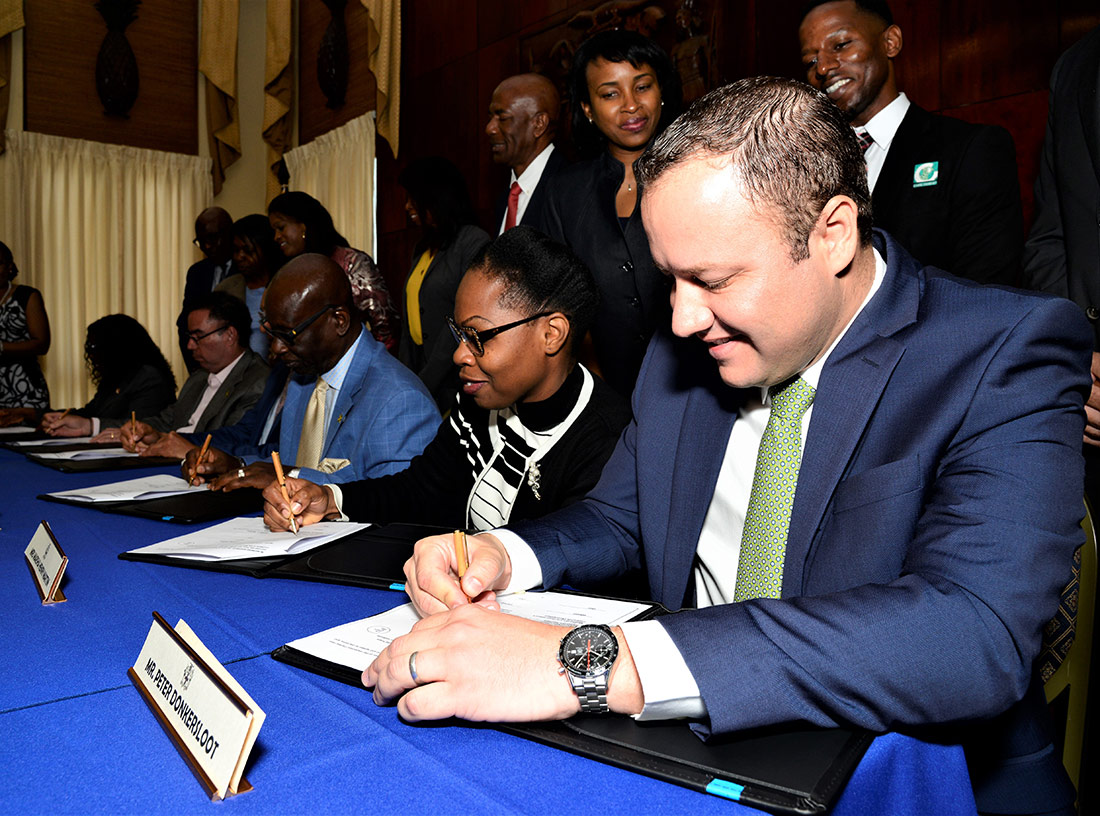Caribbean Cement Company Limited has signed a Memorandum of Understanding with the Ministry of Local Government and Community Development; the Ministry of Economic Growth and Job Creation and the National Solid Waste Management Authority to conduct a pilot project to destroy tyres in its kiln. The pilot will last for 40 days and will, during the period, see approximately 200 truckloads of tyres being transported from the Riverton landfill to be destroyed in the kiln. Once this phase has ended, a review will be conducted to see how best to map a project that will result in the safe and sustainable removal of the more than the estimated 1.5 million tyres that are in the Riverton landfill. This project is part of the company’s corporate social responsibility programme and will not result in economic profit. We hope for a successful project as this could be a big turnaround for the country in reducing the risks associated with end of life tyres.
“The approach we have settled on is not one that is economically profitable to us, however there is greater benefit in its potential to be a long term solution for disposing of tyres dumped at the Riverton Landfill. We have the capacity to help with this problem and the bottom line for us is that it is part of our social responsibility to assist. After more than one year of working with the GoJ on the planning stage, we are ready to move on to the execution stage. We are pleased to cement our commitment, and to start an industrial trial which, if proven successful, will see Carib Cement significantly reducing tyres in Riverton landfill in about 5 years.” Remarks by Peter Donkersloot
Among the recommendations of the 2006 the Caribbean Solid Waste Conference was that tyres could be used as an energy source for cement plants. – Read more (pg 41) Solid Waste Management in the Caribbean Proceedings from the Caribbean Solid Waste Conference”
– Inter-American Development Bank“The single highest volume and quickest route to recovery of tyres was to use them for their energy and cement kilns, as the main user for tyre derived fuel (TDF).”
Page 14 – End of Life Tyre Report 2015Of that 100% collection figure there is an estimated 5% considered as residual waste, with unknown recovery routes. The balance goes largely to energy recovery (49%) and recycling (46%). 91% of tyres that go to energy recovery are used in the cement kilns
Page 17 – End of Life Tyre Report 2015
News Articles
- Gov’t inks agreement with Carib Cement to rid dumps of old tyres
- Gov’t To Introduce Used Tyre Disposal Programme
- Thousands of tyres removed from Riverton dump under trial project
- NEPA expects no negative environmental impact from Riverton tyre conversion
- ‘No environmental issue’ – Gov’t seeks to allay concerns about tyre conversion at Riverton dump
- Gov’t partners with Carib Cement to remove tyres from Riverton
- Gov’t and Carib Cement sign agreement to facilitate conversion of old tyres to energy
- Government Partners with Carib Cement to Remove Tyres From Riverton
- Carib Cement To Convert Tyres At Riverton To Energy
- Gov’t partners with Carib Cement to remove tyres from Riverton


